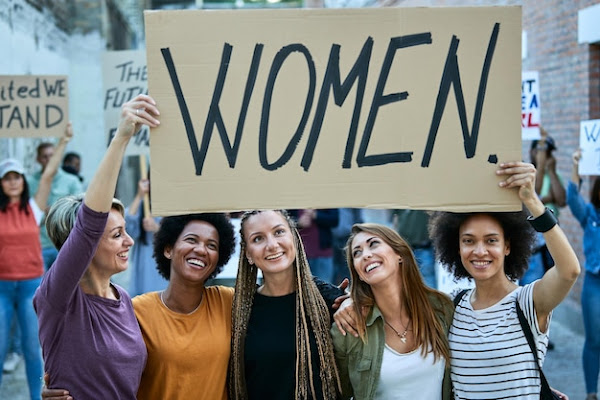Women's rights and gender equality
The quest for gender equality and women's rights has been an enduring struggle throughout history. Societal norms, cultural practices, and legal frameworks have often perpetuated gender-based discrimination, limiting the opportunities and freedoms of women. This essay explores the historical context, current status, and future prospects of women's rights and gender equality, emphasizing the multifaceted dimensions of this complex issue. The discussion will encompass key areas such as education, employment, reproductive rights, political participation, and societal attitudes, examining the progress made and the challenges that persist.
Introduction:
The battle for gender equality and women's rights has deep historical roots, with women facing systemic discrimination and inequality across various societies and cultures. This essay aims to provide a comprehensive analysis of the status of women's rights and gender equality, shedding light on the progress achieved and the obstacles that continue to impede the realization of true equality.
Historical Perspectives:
To understand the current state of women's rights, it is crucial to examine the historical context. Throughout history, women have been subjugated to patriarchal systems that denied them basic rights and opportunities. From the suffragette movement in the late 19th and early 20th centuries to the feminist waves of the 1960s and 1970s, women have consistently fought for their rights. The historical struggle forms the foundation for the ongoing battle against gender-based discrimination.
Legal Frameworks and International Agreements:
Over the years, there have been significant strides in establishing legal frameworks to protect and promote women's rights. International agreements, such as the Convention on the Elimination of All Forms of Discrimination Against Women (CEDAW), have played a pivotal role in shaping global attitudes towards gender equality. However, the implementation of these agreements varies, and some regions continue to struggle with enforcing legislation that safeguards women's rights.
Education:
Access to education is a fundamental pillar of women's empowerment. The essay delves into the progress made in promoting girls' education globally. It explores the challenges faced, including gender-based violence in schools, societal expectations, and cultural barriers that hinder girls' educational attainment. The empowerment of women through education not only benefits individuals but also contributes to the overall development of societies.
Employment and Economic Empowerment:
The workforce gender gap remains a significant issue worldwide. The essay examines the progress made in women's participation in the labor market, challenges faced, and the persistent gender pay gap. Additionally, it discusses the importance of breaking stereotypes and creating inclusive work environments that enable women to reach leadership positions and thrive in diverse fields.
Reproductive Rights:
The control and autonomy over reproductive choices are essential components of women's rights. The essay explores the progress and setbacks in the fight for reproductive rights, including access to contraception, family planning, and safe abortion. It addresses cultural and religious influences on reproductive rights and the importance of destigmatizing discussions surrounding women's reproductive health.
Political Participation:
Political representation is a key indicator of gender equality. This section examines the progress made in increasing the number of women in political leadership roles, the challenges faced, and the importance of dismantling barriers that prevent women from actively participating in political processes.
Societal Attitudes and Stereotypes:
Deep-seated societal attitudes and gender stereotypes contribute to the perpetuation of gender inequality. This essay analyzes the impact of cultural norms on women's rights, highlighting the need for cultural shifts and challenging ingrained prejudices to foster a more inclusive and egalitarian society.
Challenges and Barriers:
Despite significant progress, various challenges persist in the pursuit of gender equality. The essay addresses obstacles such as systemic discrimination, gender-based violence, and the intersectionality of issues affecting marginalized groups of women, emphasizing the need for comprehensive and intersectional approaches to tackle these challenges.
Case Studies:
Drawing on case studies from different regions and countries, the essay provides a nuanced understanding of the diverse challenges and successes in the fight for women's rights and gender equality. Examining specific contexts helps identify effective strategies and areas that require targeted interventions.
Future Prospects and Recommendations:
The essay concludes by outlining future prospects for women's rights and gender equality. It discusses the role of emerging technologies, ongoing activism, and the importance of continued collaboration between governments, non-governmental organizations, and grassroots movements. Recommendations for policymakers, civil society, and individuals are presented to guide efforts towards achieving true gender equality.
Conclusion:
In conclusion, the struggle for women's rights and gender equality is a complex and ongoing battle that requires multifaceted solutions. By examining historical perspectives, legal frameworks, key areas of concern, challenges faced, and future prospects, this essay provides a comprehensive analysis of the current state of women's rights. It underscores the importance of collective efforts to dismantle discriminatory systems and create a world where all individuals, regardless of gender, can live free from oppression and inequality






Comments
Post a Comment